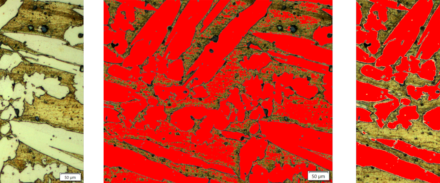Electrical installations for existing and new builds including Commercial, Public, Medical and other sectors, will all contain without exception, some form of “energy saving equipment”. This equipment will generally exhibit “non-linear load” characteristics e.g. lighting controls, Heat pumps, Voltage optimisation, EV chargers, Fan speed control.
To meet the requirements of HSR25 3rd Edition see Reg. 4(1) 65 and 4(4) 79 and the existing Wiring Regulations, Electrically Skilled Persons and Duty Holders need to have an understanding of the impact that non-linear loads have on the selection of the correct RCD protection devices.

Electrical loads are considered to be non-linear when the impedance changes as function of the applied voltage. Various methods of voltage and current control used in PSUs, UPS, Lighting controls, speed control and other Energy saving equipment, rely on power electronics to alter and or chop the electrical supply. These devices will exhibit non-linear load characteristics, resulting in non-sinusoidal leakage and residual currents, which may or may not contain pulsed or smooth DC current and high frequency AC current components.
Type AC RCDs found in many existing installations are not suitable for use with non-linear loads, a common mistake made by some Specifiers and Contractors. The focus tends to be on the Type of RCD protection immediately above the load (Branch circuit), however to meet the regulations the upstream RCD devices in feeder and main distribution boards, must be appropriate for the loads connected downstream. For instance Type B RCCBs and Type A RCCBs must not be connected down stream of Type AC RCCBs. See fig 1.
Equipment Requiring Special Types of RCCBs
The equipment connected in circuit determines the Type of RCCB which must be installed, to provide a defined and safe level of protection as required by the existing Regulations and Codes of Practice. Installations covered by BS7671 Reg 110.1.1 that is, basically any area where non-electrical staff work or members of the public are present. Regulation 331 Compatibility of Characteristics, covers the “assessment of characteristics of equipment likely to have harmful effects upon other electrical equipment in the installation” i.e. equipment mounted on the load side of an RCCB must not affect the safety performance of the RCCBs upstream.
The table below gives some generic examples based on the installed technology used and the associated RCCB. It is imperative that the inverter/machine manufactures installation instructions are checked, with regard to advice relating to the minimum sensitivity and the Type of RCCB that can be used safely with their equipment. This should be referenced back to any specific requirements contained in the UK Regulations and Codes of Practice, which may differ from the advice given by non EU equipment manufactures. To avoid problems this process should be completed during the Installation Design Phase i.e. with pencil in hand not a screw driver.
Example: Heat pumps, ventilation fans, small machines use inverter based speed control
Buildings with PME earthing may not require RCCB protection on fixed equipment -see Reg411. If the building or part of the installation is on a TT supply, it is probable that an RCCB will be required to meet Reg 411. Normally any equipment connected by plug and cable must be RCD protected, a risk assessment will determine what is required and any additional steps that need to be taken.
Meeting Regulation 331: Inverters operating on 3 phase supplies must only be connected to circuits protected by Type B RCCBs. For single phase inverters refer to the manufactures instructions with regard to the Type of RCCB, as individual designs determine the Type of RCCB required e.g. A, F or B.
RCCB Checklist
RCCBs are designed and calibrated to operate in the presence of specific types of residual current, basically the greater the complexity of the residual current flowing under fault conditions, the more complex the design of RCCB required to detect those currents e.g. Type AC RCCBs subjected to smooth DC leakage currents will not effectively sense AC earth fault current under fault conditions.
Operational leakage currents for non-linear loads can be significantly higher than conventional equipment, and must be taken into account when designing the installation. RCCB tripping current (sensitivity) must be selected based on the operational leakage currents, and the load circuits’ sub divided if necessary to prevent unwanted tripping – see regulation 531.2.4
General summary of RCCB limits of operation / refer to manufacture for full data


